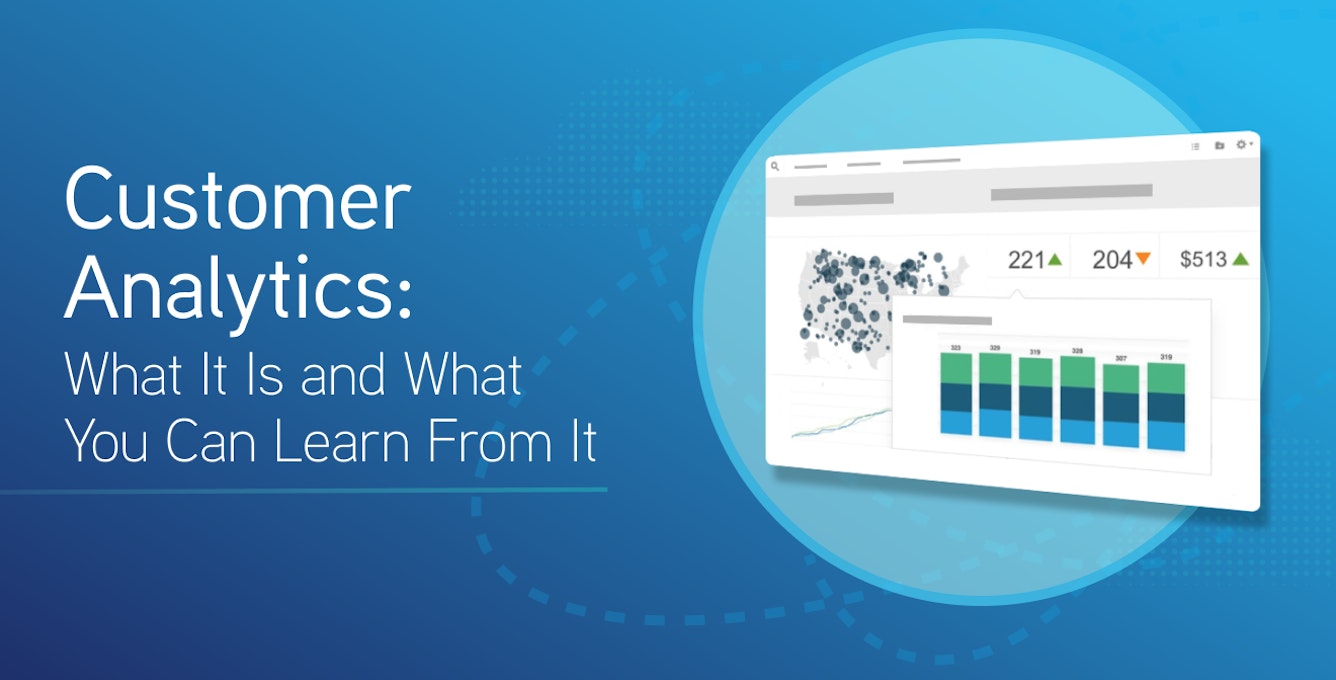Cloud Topics
Customer Analytics: What It Is and What You Can Learn From It
By Nicole Lim / May 14, 2020

When you own a business — or are thinking of starting one — one of the first considerations should be who your customers are/will be, and how best to reach them. When you analyze customer data, you can better allocate your resources, product, and time towards reaching those customers with your marketing message, and subsequently retaining those customers for repeat business.
What Is Customer Analytics?
Customer analytics refers to the technologies and processes used to give an organization insights into customer behavior during the buyer journey. This refers to different trends, habits, commonalities between customers that occur across all departments in a company — examples include:
- Demographics;
- Shopping habits;
- Where customers came from (digital ad, website, etc.);
- Customer satisfaction;
- Engagement and customer churn.
The Importance of Customer Analytics
When you utilize customer analytics, you can make informed, data-driven decisions. It can highlight customer trends, habits, or issues so that you can understand and fix areas that are not working within your current business model. Customers generally have immediate access to information anywhere thanks to the internet, smartphones, and other smart devices, and they can just as quickly choose to shop somewhere else. Customer analytics can allow you to find what your customers’ preferences are when shopping. You can then use this information to your advantage to devise your business model accordingly.
Methods of Customer Analytics
When you implement customer analytics solutions, you want to be sure that what you are analyzing is truly valuable. Below are some of the different methods of customer analytics that you should consider:
- Review Analysis: Reviews represent direct insights from consumers. They ultimately give you information based on the customer experience and their overall satisfaction throughout the buyer’s journey. This is also generally a public critique of the business — Yelp reviews, Google reviews, etc. — so potential customers are not only looking at reviews, they are watching how you respond to them.
- Predictive Analysis: Traditionally, customer analytics refers to analyzing past data, but the customer support experience can be enhanced by using different tools and software like artificial intelligence and machine learning. These tools collect data, and make educated predictions based on that data to help determine issues that may arise, or what consumers will want in the future. This can be particularly useful for turning one-time shoppers into repeat loyal customers.
- Real-Time Feedback: Real-time feedback allows for organizations to gather information on customer trends or issues as they happen. Real-time feedback is focused on taking personal consumer preferences, and making personalized improvisations to adapt to those preferences.
- Competitor Analysis: When you look at competitor data, you become aware of competitive gaps between your business model and that of your competitors. Competitor analysis consists of analyzing products/services, marketing strategies, and overall performance.
The Evolution of Customer Analytics
Originally, customer analytics referred to a few limited customer metrics that were stored in relational databases. In the past, customer analytics focused on churn or retention due to the limited bread crumbs left behind by consumers; but customer analytics have evolved. Now, as customer mobile interactions increase, you can better understand the digital footprint left behind by consumers. With the influx of available metrics to track, customer analytics can create a hyper-focus on improving the customer experience in every facet (mobile consumers, web consumers, in-person consumers).
Customer Analytics Tools
There are a variety of data analytics tools and software solutions to choose from, and although features may overlap, no two tools are identical. Generally, organizations will utilize a combination of a few different customer analytics tools — examples include:
- Digital Commerce Platform: Though not an analytics tool per se, a digital commerce platform helps organizations sell, distribute, and manage cloud-based software and services, and frequently will come with analytics capabilities or integrations. Digital commerce platforms help companies reap all of the benefits of cloud computing.
- Marketplace Platform: for every product, service, or offering wherein multiple parties interact, marketplace platforms can be used to viably launch, support, and scale an application marketplace.
- Marketplace Software: the marketplace platform you use can power the launch or operation of marketplace software. This can power all the functions needed to create a user-centric experience within the marketplace platform.
- Social Media Analytics: social media analytics can be used to identify and adapt to customers’ needs and wants. Some common examples include Sprout Social, HubSpot, and Snaplytics.
- Web Analytics Software: web analytics can help understand customer behavior and help you optimize for a better user experience. Common examples include Adobe Analytics and Google Analytics.
Related Articles

Cloud Topics
How 5G Benefits Business and Technology Innovation
Updated December 2, 2025 Imagine a world where businesses can instantly respond to customer needs, automate complex operations in real time, and conn...By Denise Sarazin / AppDirect / February 6, 2025

Cloud Topics
What Does the Growth of the Digital Economy Mean for Your Business?
We’re in the age of the digital economy, and it’s important to understand how your company is affected by its growth and expansion. When you learn mor...By Nicole Lim / AppDirect / May 15, 2024

Cloud Topics
B2B Marketplaces: A Guide for Your Business
B2B marketplaces can help elevate buyer and seller success online through a centralized platform. Improve the online buying experience for your customers today.By Ideas @ AppDirect / AppMarket / July 6, 2021